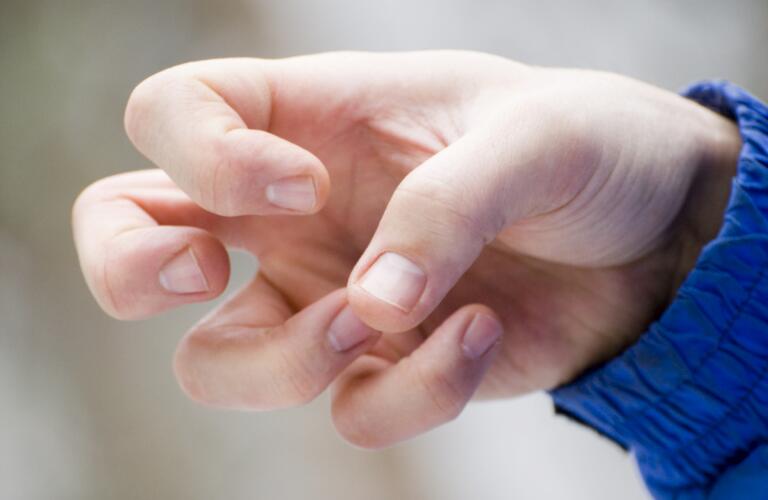
Dupuytren's contracture, or Dupuytren's disease, is a type of deformity that can affect one or both hands. Dupuytren's is caused by thickening and stiffening of the fascia, or tissue, underneath the skin in the palm of the hand. It often appears as a claw-like contracture with the pinky and ring finger bent into the palm of the hand. The condition is named after Baron Guillaume Dupuytren, the French surgeon who first did corrective surgery on the deformity in the early 1800s. Here are answers to commonly asked questions about Dupuytren's.
What Are the Symptoms of Dupuytren's Contracture?
Symptoms of the disease start slowly. The first symptoms include firm nodules or bumps that form on the palm of the hand. Here's what else you should know:
Nodules may be tender at first, but they can become less painful as the disease progresses.
Over time, thick bands of tissue form beneath the skin of the palm.
In more severe cases, the fingers, especially the last two fingers, curl down into the palm and can't be straightened.
Symptoms can involve one or both hands and can range from just nodules to complete contraction of all the fingers.
Who Is at Risk for Dupuytren's Contracture?
Doctors do not know why the fascia in the palm of the hand becomes abnormal in people with Dupuytren's contracture, but it tends to run in families. Here's what else you should know:
The disease rarely starts before age 40, but becomes more common with increasing age.
People whose ancestors are from Scandinavia or other areas in northern Europe are at the highest risk. Two-thirds of men who are related to people with Depuytren's contracture develop the condition. Having diabetes is another risk factor.
Men may be at as much as 15 times greater risk than women. However, because women tend to get a milder form of the disease, they may simply not be diagnosed as often as men.
Although drinking alcohol and cigarettes have both been linked to Dupuytren's in a few studies, altering habits does not appear to modify the disease.
One factor that does not seem to increase your risk is working with your hands or having a hand injury.
How Serious is Dupuytren's Contracture?
Dupuytren's contracture is not a life-threatening disease. Those with a milder form of the disease experience few limitations. For some people, the disease never progresses beyond the nodule stage. The disease comes on slowly, but if symptoms start at an early age, it may progress more quickly. The progressive form may end with one or both of hands frozen in a claw-like deformity, making it hard to grip or grasp, wear gloves, or even put your hand in your pocket.
What Should You Do If You're Diagnosed With Dupuytren's Contracture?
Unfortunately, there is no cure for the disease and there is nothing you can do to stop its progression. Hand exercises may be helpful if you have a mild form of the disease or if you are recovering from surgery. However, in some cases, trying to stretch your hands or exercise your fingers may actually make the disease progress more quickly. Because every person is unique, check with your doctor to see what can help you manage this disease. If you have a milder form, you may experience few limitations. If the disease progresses to cause your hand to become deformed, you may need to see a hand specialist for treatment.
What Treatment Options Are Available?
Treatment can slow down Dupuytren's and may relieve some of the deformity that has already set in. Treatment options include:
Steroid injections into the hand to relieve painful nodules
Enzyme injections into the palm to break up thickened fascia
Needle aponeurotomy where a needle is inserted through the palm of the hand to break up the fascia during this in-office procedure (recurrences are common)
A reconstructive type of open hand surgery called fasciectomy/fasciotomy to remove or split the thickened fascia (recurrence rate is variable and based on multiple factors)
What Happens After Treatment?
Surgical procedures help most people regain some movement in their fingers, but the contracture comes back in about 20% of people. After treatment, a splint may be used to keep the hand in the best position to heal. Physical therapy may be started with massage and strengthening exercises.
Key Takeaways
Dupuytren's contraction is a type of hand deformity more common in people from Scandinavia and other parts of northern Europe.
The cause is not known, but risk factors include older age, being a male, having diabetes, and having a family history of the disease.
There is no cure or method to stop the progression of Dupuytren's contraction.
The mild form of the disease doesn't progress to deformity. Treatment may be able to help more severe cases.









